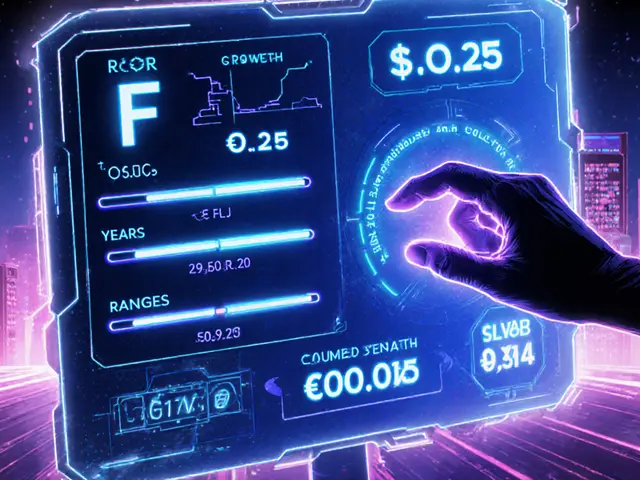Russia's New Bitcoin Cross‑Border Payment Rules 2025
When the Russian government rolled out the Federal Law No221‑FZ pilot program in September2024, it signaled a dramatic pivot: from a total ban on crypto to a tightly‑controlled gateway for cross‑border settlements using Bitcoin and other approved tokens. The move aims to keep Russian trade flowing while sidestepping Western sanctions, but it comes with a maze of compliance demands that only licensed legal entities can navigate.
Why the regulatory shift matters
For years Russia treated cryptocurrencies as a security threat, restricting any domestic use and criminalising unregistered exchanges. The turning point arrived with amendments to Federal Law No259‑FZ, which opened the door for digital assets in international trade. PresidentVladimirPutin’s 2024 directive tasked the Finance Ministry and the Bank of Russia with crafting a balanced framework-enough freedom to keep exports competitive, yet enough control to prevent money‑laundering.
Legal skeleton of the pilot
The pilot runs for three years (2024‑2027) and targets legal entities that win a spot on an official roster. Only these participants may settle invoices in Bitcoin (BTC), Ethereum (ETH), Tether (USDT) or other assets the central bank approves. All transactions must flow through a certified digital‑asset platform operator, which records the full chain of custody and reports suspicious activity to the Bank ofRussia.
- Eligibility: Companies must submit a compliance dossier, prove they operate in sectors with export‑oriented cash flow, and demonstrate robust AML/KYC systems.
- Asset list: BTC, ETH, USDT and any future “stablecoins” pegged to the Ruble.
- Reporting: Real‑time disclosure of transaction hashes, counterparties, and origin of funds.
Failure to follow the protocol can trigger criminal liability, a warning the Bank of Russia reiterated in March2025.
How a cross‑border settlement actually works
- Company A (a Russian oil exporter) signs a contract with Company B in China.
- Both firms confirm they are registered pilot participants.
- Company A converts Rubles to Bitcoin on a certified platform, specifying the invoice amount.
- The platform locks the BTC in a smart‑contract‑style escrow, then releases it to Company B once delivery documents are uploaded.
- Bank of Russia receives an automated report, matches it against the pilot roster, and logs the transaction in a central ledger.
Every step is auditable, which is why the system is appealing to large exporters who need a reliable alternative to SWIFT.
Key players and their roles
Besides the Bank of Russia, three institutions shape the ecosystem:
- Ministry of Finance - drafts amendment texts and decides on the “highly qualified” investor thresholds.
- Digital Ruble pilot program - tests a state‑issued CBDC that will later integrate with cross‑border crypto settlements.
- Certified platform operators - act as custodians, AML monitors and technical bridges to foreign blockchain networks.
Market impact in numbers
Official statistics released in June2025 show that crypto‑facilitated trade hit 1trillionrubles-a 45% jump from the previous year. The energy sector led the charge: by early 2025, Russian firms were invoicing oil shipments to China and India using Bitcoin and USDT, cutting transaction costs by roughly 2% per trade compared with traditional correspondent banking.
Investor activity also surged. After the May2025 allowance for “highly qualified” investors to buy Bitcoin futures, Russian funds purchased about $16million worth of contracts in the first month. The Ministry of Finance is now reviewing the 100million‑ruble asset threshold, hinting at a broader retail opening once the pilot proves stable.

Compliance hurdles every business must clear
Even with the pilot’s incentives, the compliance burden is heavy. Companies need to:
- Implement AML software that can parse blockchain transaction metadata.
- Maintain a KYC database for every counter‑party, even if the foreign partner uses an offshore exchange.
- Submit daily transaction logs to a central repository managed by the Bank of Russia.
- Conduct internal audits every quarter to confirm that no peer‑to‑peer transfers bypass the certified platform.
Many mid‑size firms struggle with the cost of these systems, which is why the pilot currently caps participation at roughly 150 entities across logistics, energy, and heavy industry.
Domestic crypto stays off‑limits
| Aspect | Domestic | Cross‑border (Pilot) |
|---|---|---|
| Legal status | Prohibited for payments | Allowed for qualified legal entities |
| Allowed assets | None | BTC, ETH, USDT, Ruble‑backed stablecoins |
| Transaction routing | Unregulated exchanges (illegal) | Certified platform operators only |
| Reporting requirement | None (illegal) | Real‑time to Bank of Russia |
| Investor eligibility | General public (crypto bans apply) | Highly qualified investors (≥100MRUB assets) |
In short, the government wants crypto to stay a foreign‑trade tool, not a domestic payment method.
Future outlook beyond the pilot
When the three‑year window closes in 2027, authorities will evaluate three key metrics:
- Volume of cross‑border settlements (target: 2trillionrubles by 2028).
- Incidence of AML violations (goal: <1% false‑positive rate).
- Investor feedback on access thresholds (possible relaxation of the 100million‑ruble floor).
If the results are positive, a permanent legal regime could emerge, likely expanding the asset list to include more stablecoins and even tokenised commodities. The Digital Ruble is expected to interoperate with the crypto channel, giving large enterprises a single‑window settlement experience by 2028.
Key takeaways
- Only approved legal entities can use Bitcoin for cross‑border payments under the Federal Law221‑FZ pilot.
- All transactions must run through certified platform operators and are reported in real time to the Bank of Russia.
- Domestic crypto payments remain illegal; the regime is strictly for international trade.
- Energy and heavy‑industry exporters are the primary adopters, driving over 1trillionrubles in crypto‑settled trade in 2025.
- Compliance costs are high, but the pilot promises lower sanctions‑evasion risk and faster settlement.
Frequently Asked Questions
Can a small Russian business join the crypto pilot?
In theory yes, but the pilot caps participation at around 150 firms, prioritising exporters and heavy‑industry players. Small businesses often lack the AML/KYC infrastructure required for approval.
Which cryptocurrencies are currently permitted?
Bitcoin (BTC), Ethereum (ETH), Tether (USDT) and any Ruble‑backed stablecoin that the Bank of Russia adds to the approved list.
Do Russian individuals benefit from the new rules?
Only if they qualify as “highly qualified” investors-meaning at least 100million rubles in assets or 50million rubles annual income. Otherwise, personal crypto transactions remain prohibited.
How does the pilot affect sanctions compliance?
By routing payments through approved platforms under central bank oversight, Russia aims to demonstrate that crypto settlements are transparent and not used for illicit evasion. However, foreign regulators still watch these flows closely.
What happens after the three‑year pilot ends?
The government will review usage data, compliance statistics, and market feedback. If the outcomes meet targets, a permanent legal framework could be enacted, potentially widening the asset list and easing investor eligibility.






18 Comments
John Kinh
June 29 2025Looks like Russia finally found a loophole, 🙄
Nathan Blades
July 8 2025The pilot program is a bold experiment that could reshape the way sanctioned economies bypass traditional finance.
By forcing every transaction through a certified platform, the state gains unprecedented visibility into cross‑border flows.
This transparency is a double‑edged sword: it deters illicit activity but also creates a massive data collection point.
Export‑heavy firms will likely welcome the reduced reliance on SWIFT, especially when sanctions choke the old pipelines.
At the same time, mid‑size players may find the compliance costs prohibitive, which could consolidate power in a few giants.
The inclusion of Bitcoin, Ethereum, and USDT shows the regulators are willing to embrace mainstream crypto assets.
However, the list still excludes many emerging tokens that could offer lower fees or faster settlement.
The real test will be how the Bank of Russia enforces the real‑time reporting without stalling the network.
If the ledger becomes a bottleneck, exporters might revert to informal channels, defeating the whole purpose.
On the geopolitical front, this move signals to the West that Russia can adapt and keep its trade arteries open.
Western banks may respond with tighter AML checks on counterparties, turning the sandbox into a battlefield of compliance.
Investors have already thrown $16 million into Bitcoin futures, indicating a growing appetite for crypto‑linked exposure.
Should the threshold for "highly qualified" investors be lowered, we could see a retail wave that pressures the pilot's limits.
From a technological perspective, integrating a state‑issued digital ruble with foreign blockchains will require sophisticated bridges.
If those bridges are built securely, they could become a template for other sanctioned economies.
In short, the pilot is a high‑stakes gamble that could either cement Russia's crypto foothold or expose systemic fragilities.
Evie View
July 18 2025Honestly, this whole setup feels like a chainsaw wrapped in silk-beautiful on the surface but ready to rip anyone who dares question it! The state’s heavy hand will crush any dissent, and the companies forced into this maze will bleed under endless audits. It’s a nightmare dressed as progress, and I’m fed up with the propaganda.
Sidharth Praveen
July 28 2025Seeing Russia take a pragmatic step toward crypto‑enabled trade is refreshing. If firms can navigate the compliance maze, they’ll unlock new markets and keep their cash flowing. I believe the pilot will prove that regulation and innovation can coexist.
emmanuel omari
August 7 2025All these fancy crypto buzzwords ignore the simple truth: Russia has always prioritized sovereignty over foreign pressure. By controlling the channels, the state safeguards national interests and ensures that sanctions cannot cripple our economy. This is not a hobby project; it’s a strategic imperative.
Andy Cox
August 17 2025the pilot looks like a mixed bag it could help big exporters but small guys might get left behind we’ll see how the banks handle the reporting load
Courtney Winq-Microblading
August 27 2025Imagine a river that once ran freely now forced through a series of glass tunnels-each tunnel a regulator, each bend a question of freedom. The Russian cross‑border crypto experiment turns commerce into a reflective mirror, showing us how technological currents can be both liberating and constraining. In this dance of code and policy, the steps we choose will echo far beyond the ledger.
Jayne McCann
September 6 2025People think this is a good idea but really it just adds more red tape.
Richard Herman
September 15 2025While the pilot raises valid concerns, it also offers a pathway for nations under pressure to stay connected. If stakeholders cooperate and keep the process transparent, we might find a middle ground that respects both security and economic necessity.
Stefano Benny
September 25 2025From a fintech perspective, this pilot is a classic case of over‑engineering-layered KYC, AML, real‑time hashing, all while trying to keep latency low 😎. The more moving parts you add, the higher the risk of systemic failure.
Bobby Ferew
October 5 2025Honestly, the compliance overhead feels like a compliance swamp-endless KYC loops, AML filters, and audit trails that drain resources. It's a brutal reminder that regulatory frameworks often prioritize form over function.
celester Johnson
October 15 2025One could argue that the pilot is less about innovation and more about control masquerading as progress. The state’s gaze into every transaction reveals an underlying desire to monitor, not to empower.
Prince Chaudhary
October 25 2025Don't let the paperwork intimidate you-think of the pilot as a training ground that sharpens your operational edge. Embrace the challenge, and your firm will emerge stronger in the global arena.
Mark Camden
November 4 2025It is imperative that we recognize the ethical dimensions of this initiative. By permitting only select entities to trade via cryptocurrency, the government creates an inequitable system that undermines the principles of fair competition and transparency.
Sophie Sturdevant
November 13 2025Listen up, teams: you need to overhaul your AML stack now or you’ll drown in regulatory penalties. Deploy a blockchain analytics solution, tighten your KYC protocols, and treat the pilot as a non‑negotiable compliance sprint.
Somesh Nikam
November 23 2025Absolutely, Sophie - the urgency you stress is spot‑on. Implementing a robust analytics layer will not only satisfy the Bank of Russia’s reporting demands but also future‑proof your operations 😊.
Jan B.
December 3 2025Good point Thanks Somesh lets keep it simple and focus on the core compliance steps.
MARLIN RIVERA
December 13 2025This so‑called “bold experiment” is nothing but a clumsy attempt to legitimize a failing system. The endless reporting requirements will choke any real innovation and turn the platform into a bureaucratic nightmare.